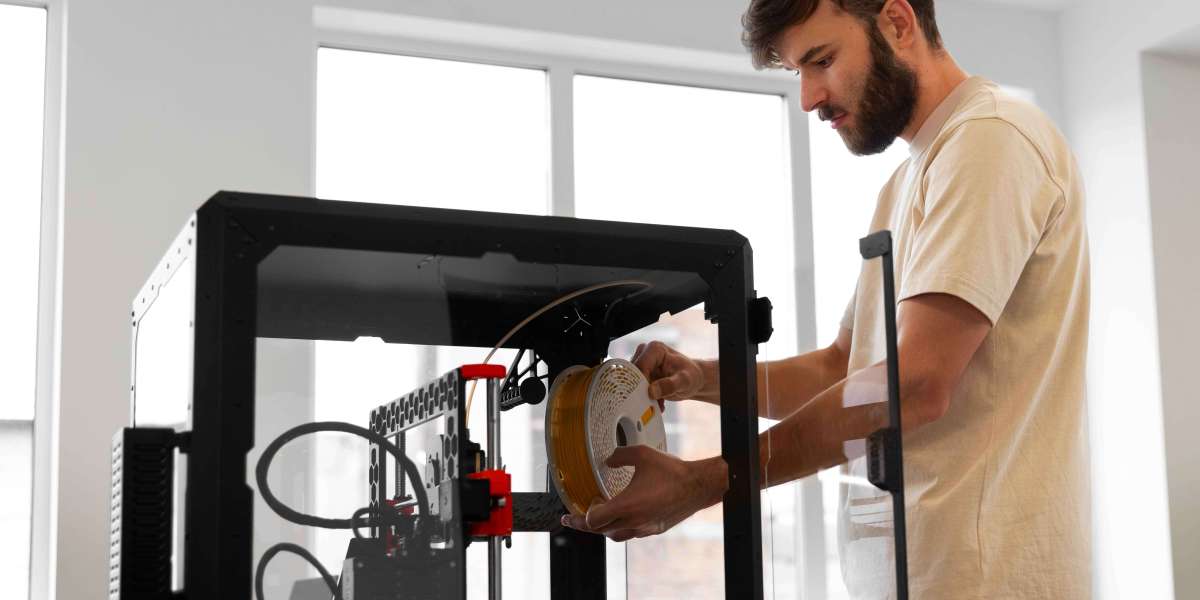In recent years, 3D printing has revolutionised the manufacturing landscape, offering innovative solutions across various industries. Companies like CAD Deziners are at the forefront, providing cutting-edge services that transform digital designs into tangible objects. But what exactly are 3D printing services, and how do they operate? Let's delve into the world of additive manufacturing to understand its processes and applications.
Understanding 3D Printing
The technique of 3D printing, sometimes referred to as additive manufacturing, turns computer information into three-dimensional objects. Unlike traditional manufacturing methods that often involve cutting or hollowing out materials (subtractive manufacturing), 3D printing builds objects layer by layer. This additive process allows for the creation of complex geometries that would be challenging or impossible to achieve with conventional techniques.
The 3D Printing Process
Design Creation
The process begins with developing a 3D model using Computer-Aided Design (CAD) software. Designers can create intricate models tailored to specific requirements.
File Preparation
Once the design is complete, it's converted into a format compatible with 3D printers, typically an STL or OBJ file. This file is then processed by slicing software, which divides the model into thin horizontal layers and generates the necessary instructions for the printer.
Printing
The 3D printer reads the sliced file and begins constructing the object layer by layer. Materials such as plastics, metals, or resins are deposited and solidified depending on the technology used to form the final product.
Post-Processing
After printing, the object may undergo additional treatments like cleaning, curing, or surface finishing to enhance its appearance and functionality.
Technologies Utilised in 3D Printing
Fused Deposition Modelling (FDM): This widely used technique involves extruding thermoplastic filaments through a heated nozzle, building the object layer by layer. FDM is popular for its affordability and versatility.
Stereolithography (SLA)
SLA employs a laser to solidify liquid resin into hardened plastic, creating high-resolution objects with smooth surfaces. It's ideal for detailed prototypes and intricate designs.
Selective Laser Sintering (SLS)
SLS is used for creating robust parts with intricate geometries because it employs a laser to fuse powdered materials, like metal or nylon, into solid structures.
Direct Metal Laser Sintering (DMLS) and Selective Laser Melting (SLM)
These techniques are used for metal 3D printing, where a laser fuses metal powders to create strong, functional metal parts.
Applications of 3D Printing Services
The versatility of 3D printing in Melbourne has led to its adoption across numerous sectors:
Prototyping
Rapid prototyping allows designers and engineers to quickly produce and test models, accelerating development and enabling swift iterations.
Healthcare
3D printing is being used to create bioprinted tissues, prosthetics, and customised medical devices, providing individualised healthcare solutions.
Automotive and Aerospace
Lightweight components, complex parts, and tooling are manufactured using 3D printing, contributing to enhanced performance and fuel efficiency.
Architecture and Construction
Architects create detailed scale models, and there are emerging applications in constructing building components and even entire structures.
Consumer Goods
From fashion accessories to household items, 3D printing enables the creation of customised products tailored to individual preferences.
Advantages of 3D Printing Services
Engaging 3D printing services offers several benefits:
Design Flexibility
It is possible to realise sophisticated and complex designs without being constrained by conventional manufacturing techniques.
Customisation
Products can be tailored to specific needs or preferences, providing personalised solutions.
Reduced Waste
Additive manufacturing uses only the material necessary for the object, minimising waste compared to subtractive processes.
Speed
Rapid production and prototyping reduce development periods, allowing new items to reach the market more quickly.
Choosing the Right 3D Printing Partner
Consider the following factors:
Expertise and Experience
Look for providers with a proven track record and expertise in the specific technologies relevant to your project.
Range of Services
A comprehensive service offering, including design assistance, material selection, and post-processing, can streamline the production process.
Material Selection
Access to a wide range of materials allows for greater flexibility in meeting functional and aesthetic requirements.
Future Trends in 3D Printing
The landscape of 3D printing is continually evolving, with emerging trends shaping its future:
Advancements in Materials
Development of new materials, including composites and bio-based options, is expanding the applications of 3D printing.
Increased Adoption in Mass Production
While traditionally used for prototyping, 3D printing is making inroads into mass production, especially for customised or low-volume items where traditional manufacturing isn’t cost-effective. This shift is enabling businesses to adopt more agile and on-demand production models.
Sustainability Initiatives
As the focus on eco-friendly manufacturing grows, 3D printing’s ability to minimise waste and use recycled or biodegradable materials makes it a key player in sustainable production efforts.
Integration with AI and Automation
The use of artificial intelligence in design optimisation and automated post-processing is streamlining workflows and improving accuracy in 3D printing.
Decentralised Manufacturing
With 3D printers becoming more accessible, the idea of localised or on-site production is gaining traction, reducing the need for extensive supply chains and allowing for just-in-time manufacturing.
Realising Ideas, One Layer at a Time
The essence of 3D printing lies in turning imagination into something you can hold in your hand. Whether you need a unique prototype, a complex industrial part, or a finely detailed model, our team at CAD Deziners understands that every project is more than just plastic or metal — it’s a vision coming to life.
As your dedicated 3D printing partner, we make it our mission to support you every step of the way. From consultation and CAD design to material selection and post-processing, we provide end-to-end solutions that ensure efficiency, accuracy, and excellence.
The Final Word
In a rapidly advancing technological era, 3D printing services in Melbourne are changing how we design, create, and manufacture. 3D printing in Melbourne is no longer just a novelty — it’s a core part of innovation in countless industries.
Meanwhile, if you’re looking for 3D printing services in Melbourne, CAD Deziners has you covered! We’re proud to be part of this transformation. Our focus on quality, customisation, and collaboration ensures that our clients always receive the best possible results.


